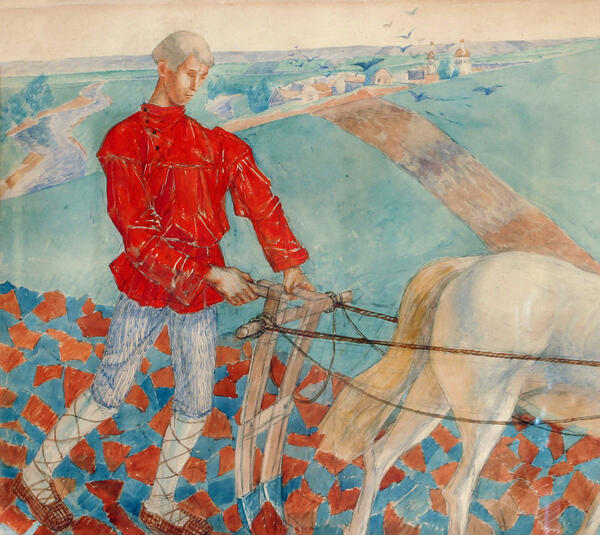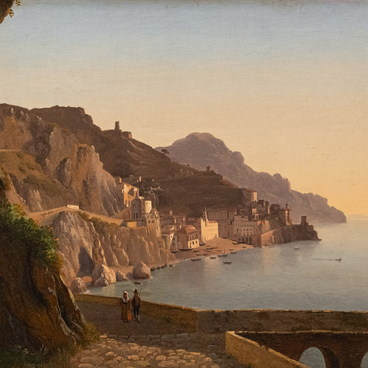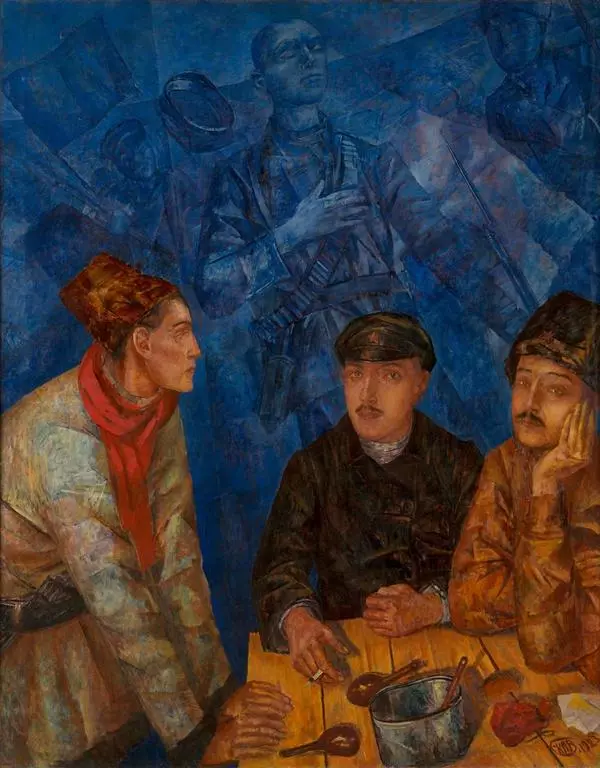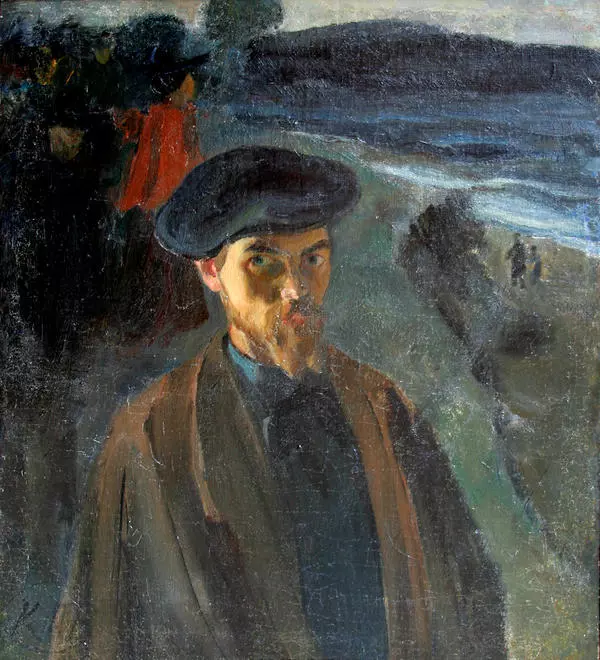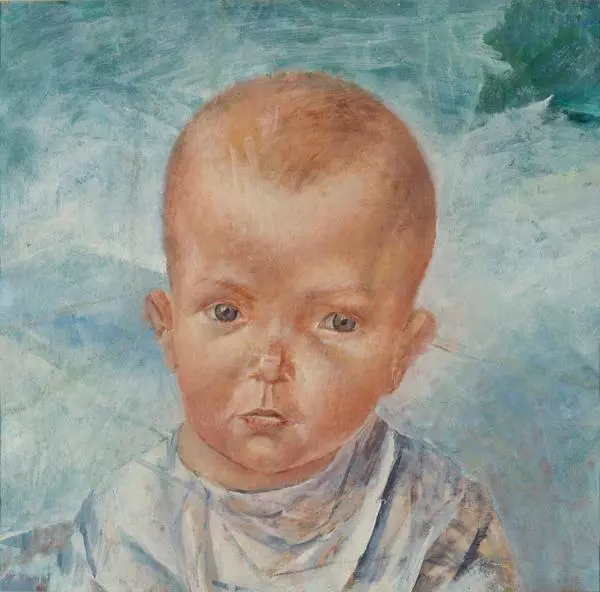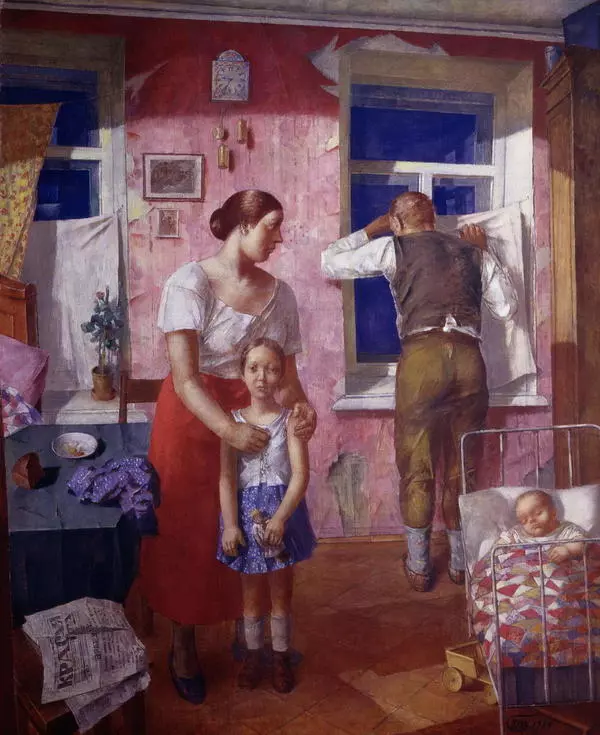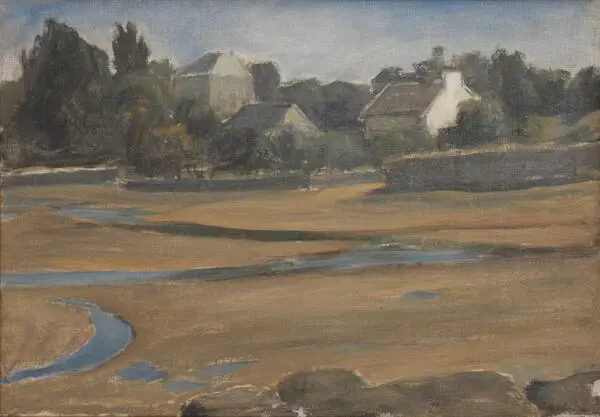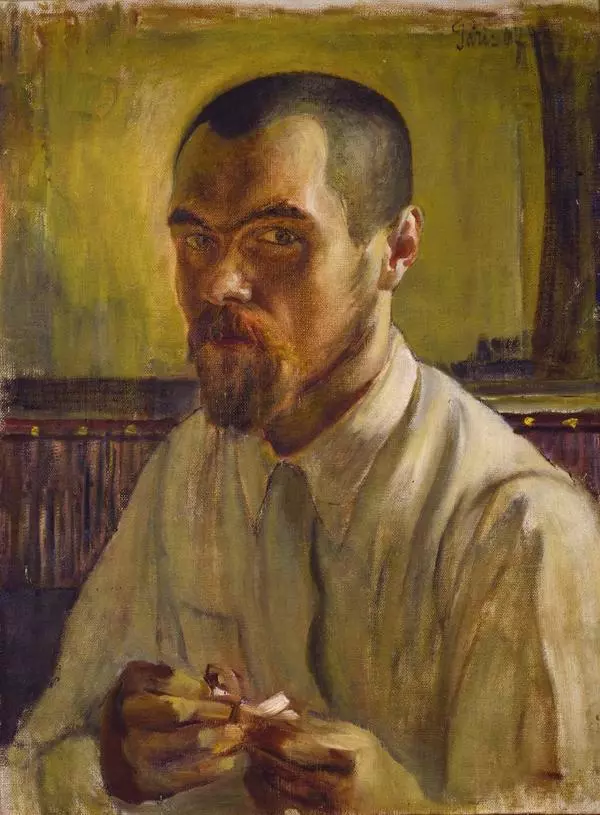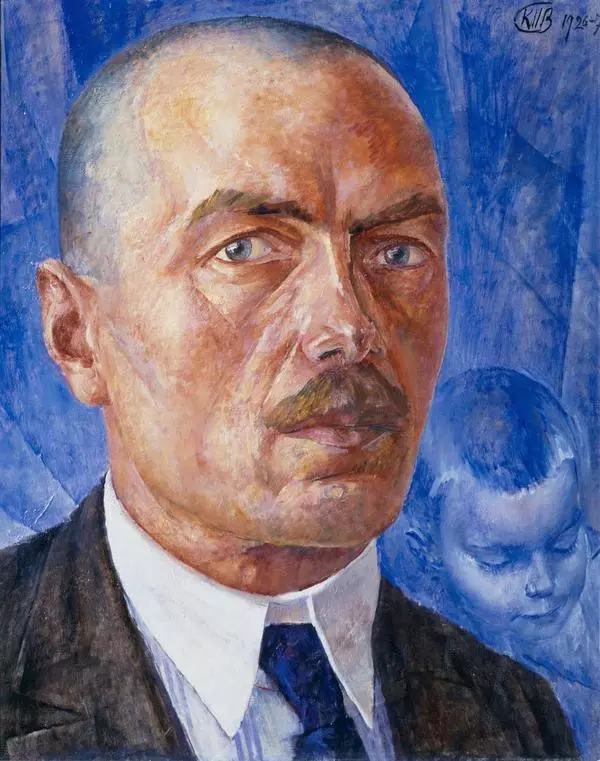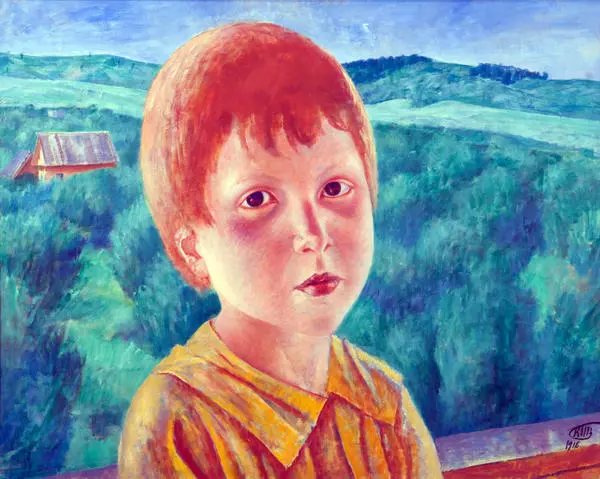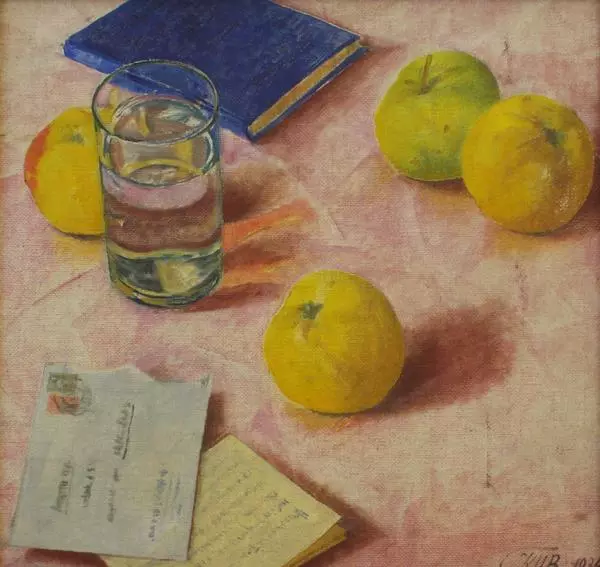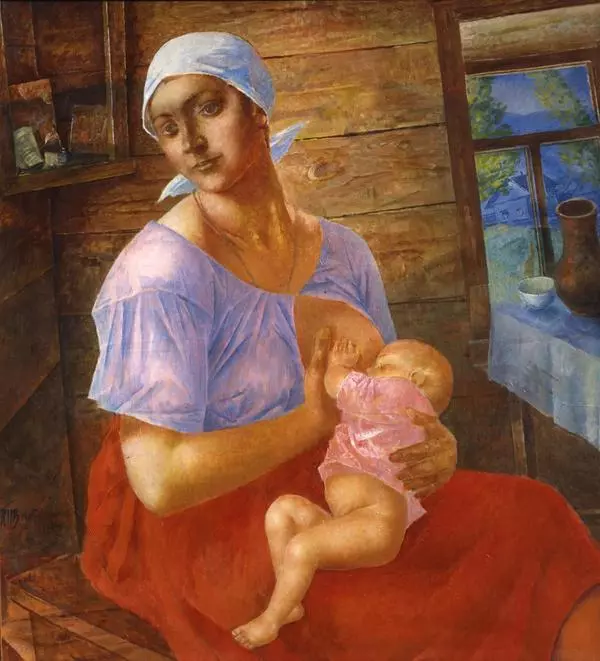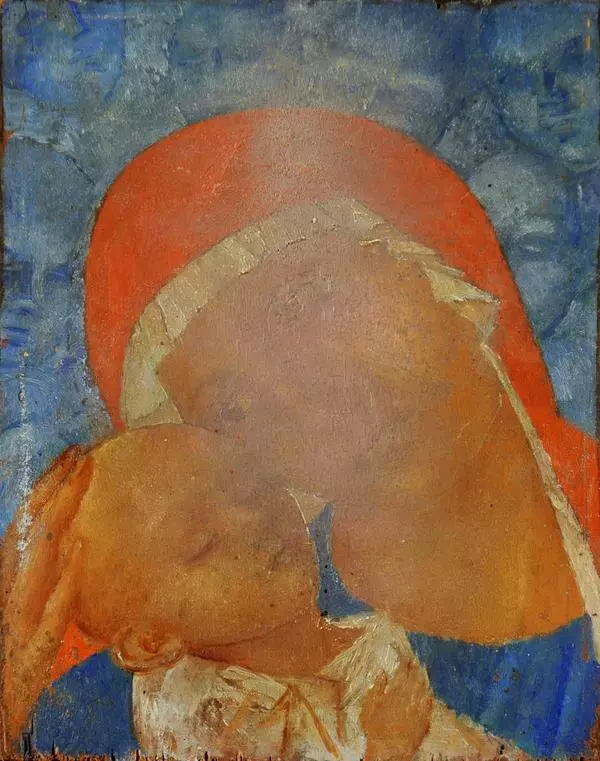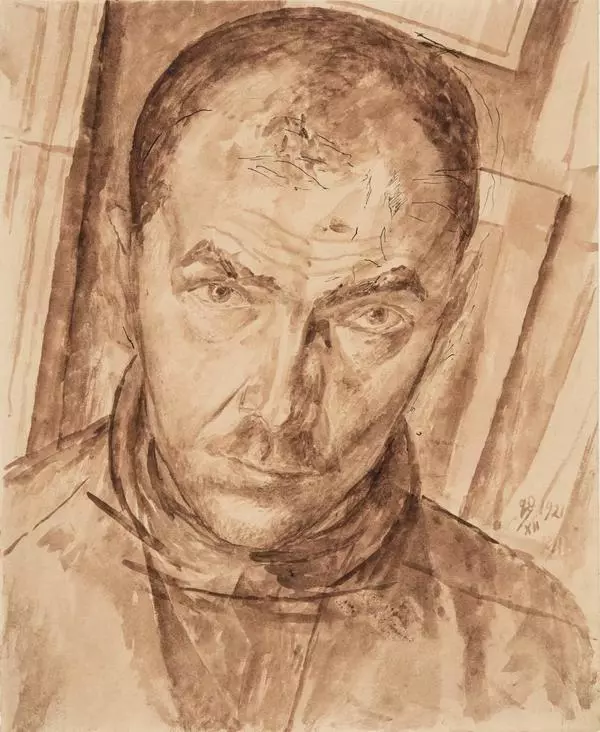The 1918 graphic sheet “Mikula Selyaninovich” by Kuzma Sergeyevich Petrov-Vodkin entered the Pskov Museum in 1921 after being transferred from the Petrograd branch of the State Museum Fund.
By the beginning of the Russian Revolution, Kuzma Petrov-Vodkin was already an established artist. He joined the Petrograd Council for Arts. He also became a professor at the Academy of Arts which was later transformed into the Petrograd Free Art Educational Studios. There, he developed his own theory of painting.
As part of the monumental propaganda plan developed by the Soviet government, festive decorations for city streets and squares were created to commemorate the anniversaries of Soviet rule. In 1918, on the first anniversary of the October Revolution, four large-scale panels by Petrov-Vodkin were installed at Theater Square in Petrograd — “Stepan Razin”, “Ivanushka the Fool and the Firebird”, “Vasilisa the Wise”, and “Mikula Selyaninovich.” Unfortunately, these large panels have not survived.
More than half of the composition is occupied by a landscape. The background is constructed according to a spherical perspective. This is a special system for designing the painting space developed by Kuzma Petrov-Vodkin. The earth is presented in a dynamic instead of a static way.
In the foreground, the tall figure of Mikula Selyaninovich is slightly tilted towards a white horse and accentuated by the red shirt. The plowed land resembles a patchwork quilt. On top of the azure hill, armed riders stand, and dark birds fly in the sky.
“Russia appeared on Petrov-Vodkin’s festive panels
not with tender images of motherhood and femininity, but in its masculine,
peasant aspect — with the strength of epic heroes, the riot of characters, and
the ability to engage in a fight with fate on one’s own that brought everything
from good luck and glory to death to the heroes of Russian epic legends. In the
sketches of the panels, and even more so in the studies, portraits of the
characters, the artist expressed his feelings: a share of doubt, and anxiety
for the fate of the people rushing into the abyss of revolution. In ‘Mikula
Selyaninovich’, there is restraint and tension, perhaps a resigned expectation
of the future, somewhat akin to that of the rider on a red horse in ‘Stenka
Razin’ — there is the drama of an adventurous hero, equally prepared for both
victory and death,” from an article by Natalya Lvovna Adaskina, Head of the 20th-Century
Graphics Department at the State Tretyakov Gallery.

